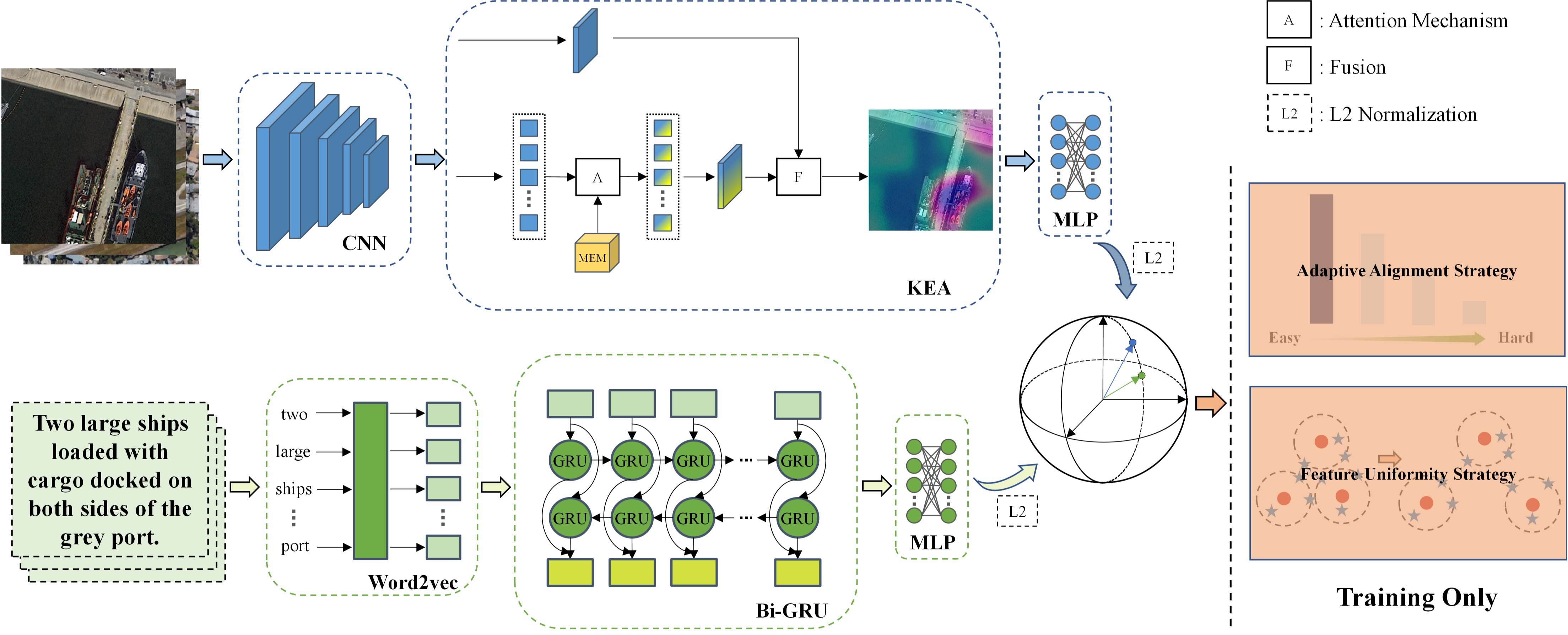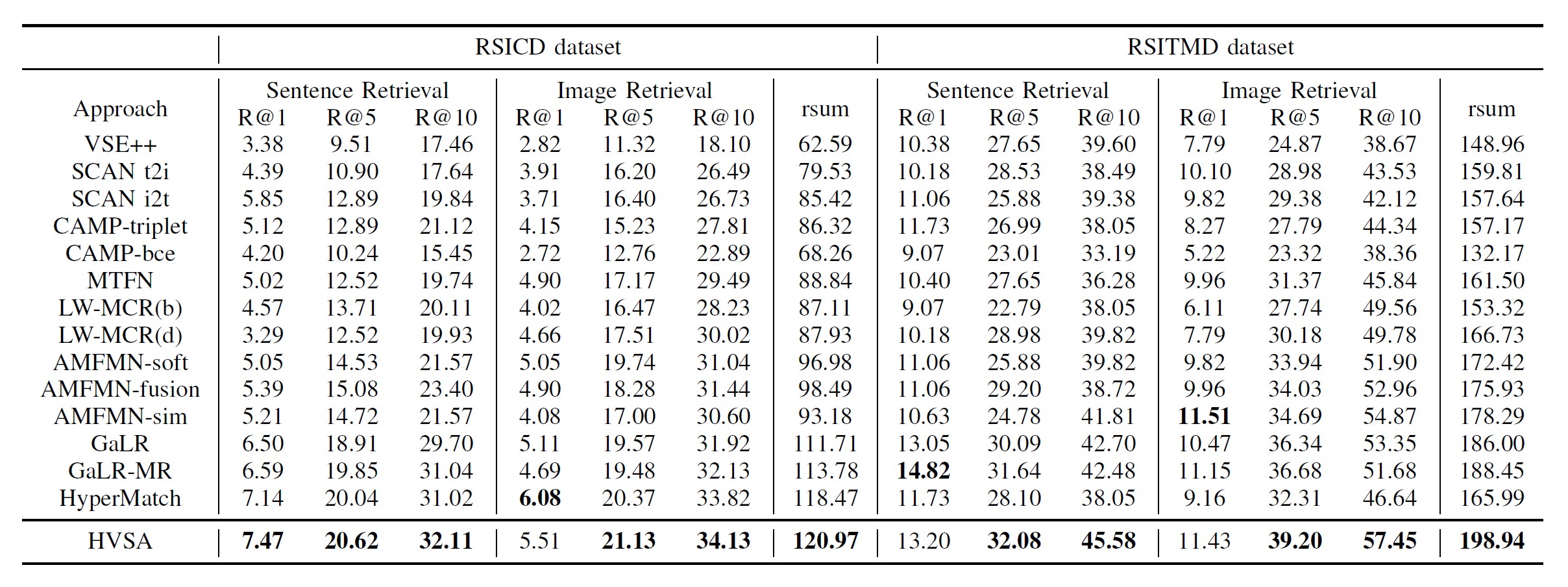HVSA
Official PyTorch implementation for Hypersphere-Based Remote Sensing Cross-Modal Text–Image Retrieval via Curriculum Learning.
News 🎉
- 📣 Oct 2023 - The code of HVSA has been released.
- 📣 Oct 2023 - Codes is coming soon (before Nov).
- 📣 Sep 2023 - Paper Accepted by TGRS.
Dependencies
Download the dataset files and pre-trained models. Files about seq2vec are from here.
Install dependencies using the following command.
pip install -r requirements.txt
Dataset preparation
All experiments are based on RSITMD and RSICD datasets,
RSICD
We followed the same split provided by AMFMN. Dataset splits can be found in data/rsicd_raw.
RSITMD
We followed the same split provided by AMFMN. Dataset splits can be found in data/rsitmd_raw.
Train
# RSITMD Dataset
python train.py --config configs/HVSA_rsitmd.yamlEvaluate
# RSITMD Dataset
python eval.py --config configs/HVSA_rsitmd.yamlPerformance
Citing HVSA
If you find this repository useful, please consider giving a star ⭐ and citation:
@ARTICLE{10261223,
author={Zhang, Weihang and Li, Jihao and Li, Shuoke and Chen, Jialiang and Zhang, Wenkai and Gao, Xin and Sun, Xian},
journal={IEEE Transactions on Geoscience and Remote Sensing},
title={Hypersphere-Based Remote Sensing Cross-Modal Text–Image Retrieval via Curriculum Learning},
year={2023},
volume={61},
number={},
pages={1-15},
doi={10.1109/TGRS.2023.3318227}}
Acknowledgment
The implementation of HVSA relies on resources from VSE++, and AMFMN. We thank the original authors for their open-sourcing.

